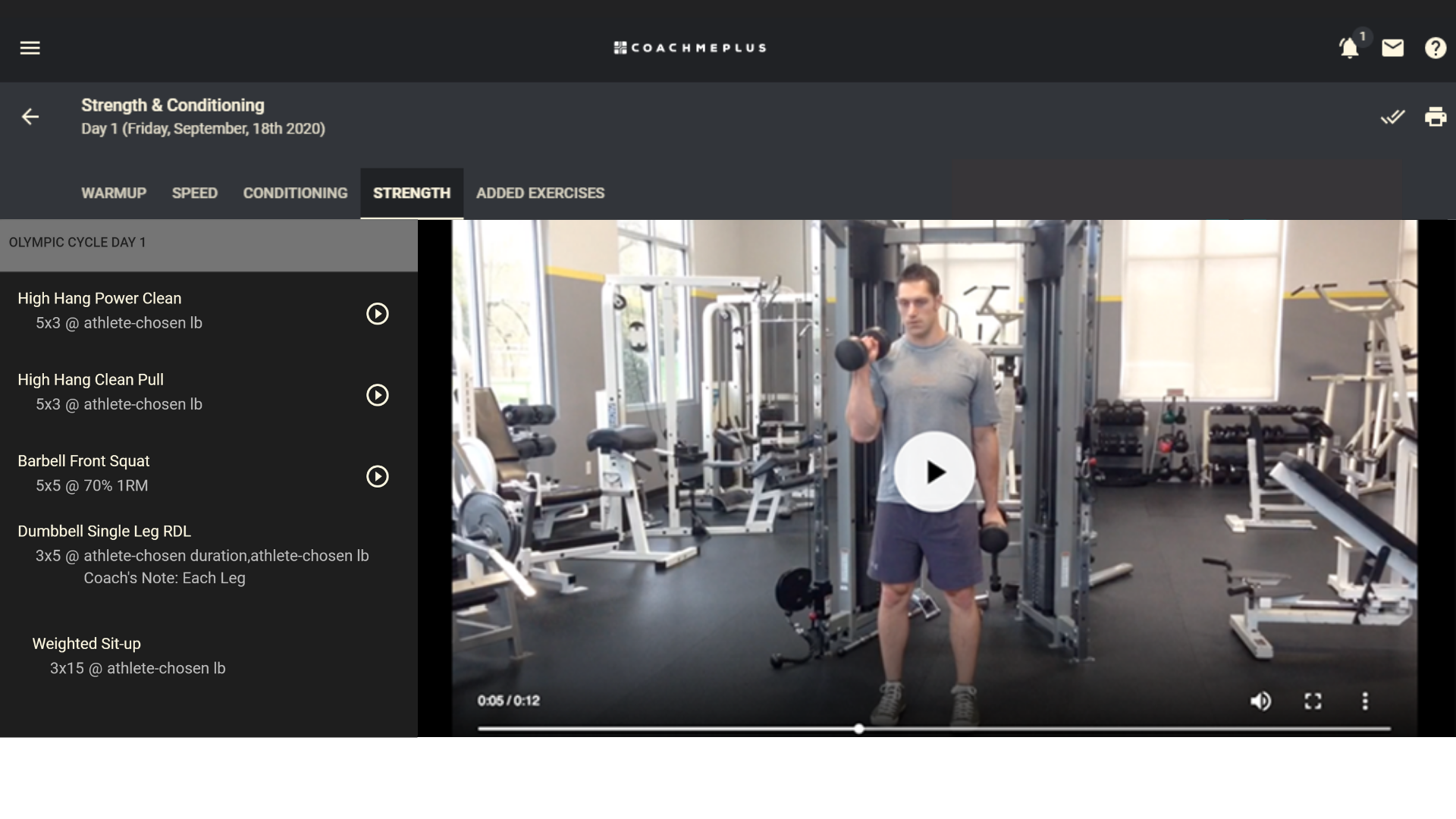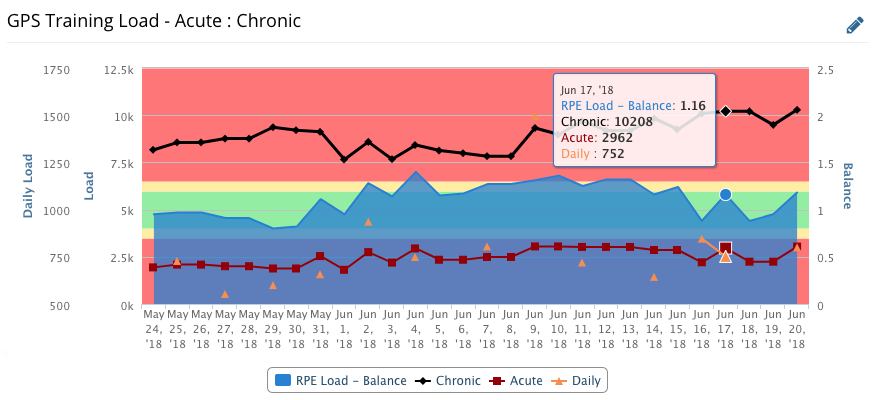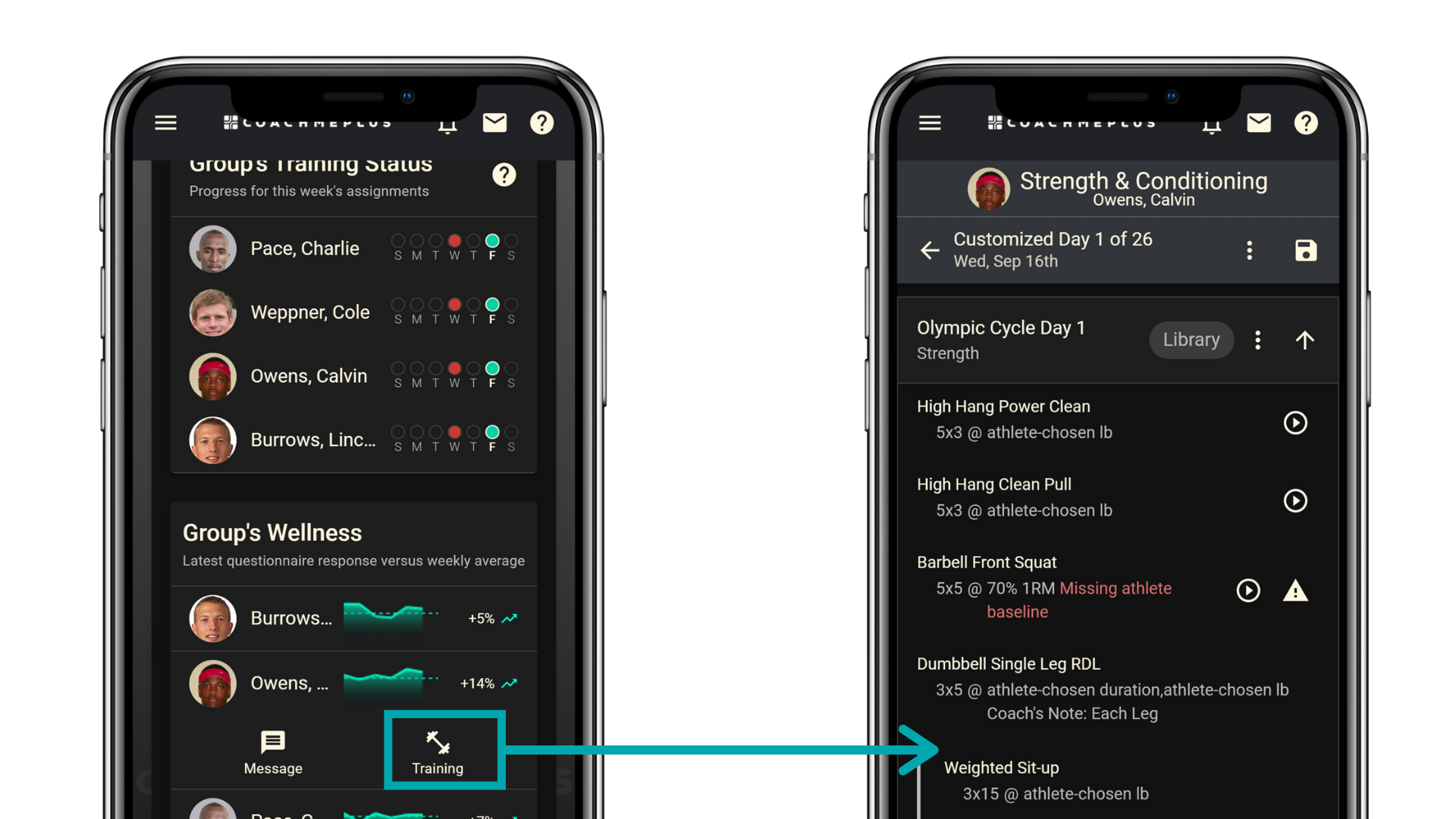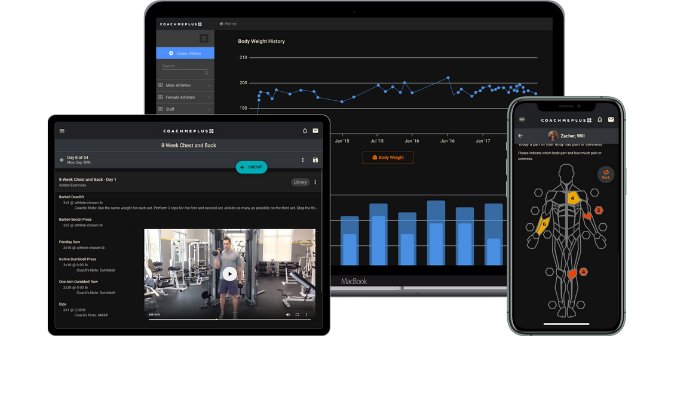
The growth of strength and conditioning software can be seen with the increased usage of both personal smart devices with athletes and tablets in the weight room. Sports teams and fitness professionals are investing in strength and conditioning software for multiple reasons, mainly to improve time efficiency and communication with their athletes. Fitness professionals are using the same software to help improve the results of correspondence training or private live training. Legacy solutions, specifically spreadsheet or shared document software, have benefits, but they are not as effective as full packages.
In this Academy Guide, we cover the key benefits of using strength and conditioning software in detail. In addition to its advantages, we present essential principles that make the software even more powerful if utilized correctly and consistently. Strength and conditioning software is no longer a luxury—today it’s instrumental in keeping athletes and clients supported properly. Check out the tools available to Strength and Conditioning Coaches here.
Training Design Principles: New and Old
Strength and conditioning software enhances training principles and program design. The right software enables coaches to go beyond what they can do with whiteboards to enter a world where training has less errors and guesswork. You don’t need to measure every rep in training, but every workout is an opportunity to assess and learn.

Classic principles of periodization, such as sequential planning and guidelines, have been questioned in the research of late. There is some evidence that early concepts are effective. Noted researchers and practitioners have also explained the difference between programming and operating, as they are not interchangeable. Progressive overload, density, intensity, rest, volume, and other variables are timeless, but they are more effective when modern principles are integrated. Thanks to new research and software, here are concepts that have evolved over the last few decades.
Planning
Structuring an athlete development process beforehand, including what needs to be done to prepare, when it needs to be done, how it should be done, and who will do it.
Monitoring and Testing
The repeated measurement of readiness, recovery, and ability represents testing and monitoring. The main differences with monitoring is that testing is a direct measure, whereas monitoring is usually the response or pattern of responses to training and competition.
Modeling
When planning and monitoring are combined, it forms the foundation of modeling. A true model adds in key factors to creating a successful plan, and that is the heart of the approach.
Personalizing
Customizing the effective components of a program based on the individual’s capability and preferences.
Automating
Utilizing software programs or processes that bypass or reduce human intervention, usually in rote tasks that are considered important but repetitive. Coaches who repeatedly use formulas or “monkey work” rely on automation to save time, reduce errors, and speed up the training process.
The addition of software enhances classic training principles and adds new opportunities to improve the training process. New and old concepts don’t conflict—they are actually mutually beneficial—and modern training programs can help athletes and clients achieve more if properly used.
Planning Training and Competition
Training sessions must carefully interact with competitions and must synchronize with the available time. The conventional approach of mapping out all competitions and then assessing time resources and travel demands is step one. The next step is practice and training, and most programs work backwards if possible. In many situations, coaches are faced with time frames that do not allow for adequate preparation for the season, so a modified plan of slow integration into full training is usually employed. Many professionals call this blending of what is ideal with what is actually available “the art of coaching.” It helps a coach tremendously to monitor the training load and use the right algorithms to guide them on how much they can do to increase fitness from practice and strength from outside training.

Coaches usually focus on planned rest and recovery periods, ranging from a light practice to prescribed days off. Usually, coaches reduce planned rest time periods to the minimum, hoping to use them sparingly later when forced to make changes. Active recovery and low intensity days provide enough work to keep capacity up and facilitate regeneration for the next hard session. Overall, the use of the Acute Chronic Work Ratio (ACWR) adds a degree of refinement to intuitive planning, but coaches should employ other monitoring techniques before the season begins. A rough outline of training planned in advance reduces unnecessary surprises with regard to spikes in load or under preparing the athlete.
Benchmarking progress with outside sport training beyond practices involves periodic testing, or the use of sophisticated algorithms if a program uses player tracking technology. If a program does not use technology to monitor practice and needs to observe changes through the course of a season, field tests are usually administered. End-of-year evaluations are often debriefing sessions with athletes or clients, but they are also occasions to engage them on opportunities for next year with the right data presented in a digestible form and with a professional manner.
Monitoring and Modeling Features
Input from the athlete directly, whether subjective or objective data, is a valuable feature of strength and conditioning software. Along with the power of automation, collecting measurements and making adjustments to training and medical support for athletes or fitness clients is extremely powerful. A great plan reduces the need for change, as agile plans are adaptable and flexible. Still, monitoring and the anticipation of possible adjustments that are common in training and exercise are needed.

A strong argument for monitoring can be made during the season, where the aches and pains of heavy competition make forecasting what can be done in training very difficult. Modeling creates a plan that is liquid and very adaptable; a planned set of workouts without monitoring is guesswork. Classic periodization models are not modeling, they are representations of what sequences may work better than linear models.
Modeling performance or even fitness improves future planning and helps with understanding the pitfalls of past planning. For training to succeed, coaches should use modeling to create an efficient feedback approach to their training, and capitalize on monitoring to ensure the planning is working. Modeling methods can range from very advanced approaches with teams of data scientists collaborating to a coach who is experienced enough to know that a season is going to have bumps along the way. Modeling doesn’t need to be very complicated, just as complex as necessary.
Personalization and Individualization
Two big bottlenecks to human performance are access to coaching, and access to planning or constructing individualized training. Tradeoffs exist between coaching groups that train athletes similarly and those that train with highly individualized workouts. Athletes who train together become competitive and easier to manage, but lack the personalized design qualities that may be necessary to improve outcomes. A combination and set of compromises are necessary to get the greatest results in real-world environments. Therefore, coaches should consider a balance between the group dynamics of team training and the occasional, but necessary, need for individualization.
Profiling athletes has three primary benefits, and the strongest is knowing how the athlete compares with norms and their peers. Individualization is great, but administering it to a large team or groups of teams is very time-consuming. Monitoring, while not commonly thought about, individualizes a program without much work.
Athletes with contraindicated medical problems or complicated injuries tend to drain time resources away from healthy athletes; thus, the value of software that is efficient and powerful. An athlete or client who requires extra personal attention is better supported by online software that can communicate more information back and forth. Quality communication and faster programming of return-to-play workouts, along with regular training, occur when more information is available. One-on-one settings that can deliver very personalized training sometimes are not able to deliver it because there’s not adequate infrastructure. Using online strength and conditioning software doesn’t just improve the speed of writing a workout, it exponentially improves the amount of customization of the training.
Maximizing Opportunities in Automation
The strength of software is its ability to either scale or automate the process. Coaches must value the automation benefits, as they reduce errors and save an enormous amount of time. Calculations that are used constantly should be a feature in strength and conditioning software. There is an increased need to automate any repeated process when a coach continuously relies on the same algorithms or simple formulas. Scaling is when a training process is expanded, and the most common example is when workouts are copied or repeated. The majority of coaches will refine a training program over time, and in doing so, previous workouts can be used again with modifications. Building a library of exercises and routines in advance enables coaches to save radical amounts of time later.

Connectivity of data is another example of automation that is favored by coaches, especially with dashboards. If monitoring is done at a high frequency, the data captured can be shared and repurposed in a visual form. The use of dashboards improves decision-making by automating the representation of athlete readiness or training status. Dashboards save time and increase the accuracy of decision-making by transforming the data into a comparison.
Overall, the goal of automation is to free coaches from rote jobs so they can focus more on the person-to-person interaction that they need. Using software reduces the burdens that consume time and impair connections between the professional and end user, be it athlete or fitness client. The more that information can be passively collected, sorted, filtered, calculated, and then analyzed, the better outcomes will be in athlete performance and client goals.
Migrating to a Full Online Solution
The choice to utilize online software is not a hard one—the difficulty is making the time and commitment to migrate entire departments or organizations over. The reality is that coaches don’t need to convert over to online software all in one leap, but can start with small steps such as monitoring first or uploading testing data into an Athlete Management System (AMS) such as CoachMePlus. It doesn’t take weeks for the upgrade to show value; from day one, the amount of time and energy saved is clearly evident in the speed of communication, reduction in coaching errors, and user experience of the athletes. The sooner you migrate to an online platform, the sooner you can tap into all of the advantages that coaching software provides.


Recent Comments